Hierarchical Classification with Confidence Using Generalized Logits
James W. Davis,
Tong Liang,
James Enouen,
Roman Ilin
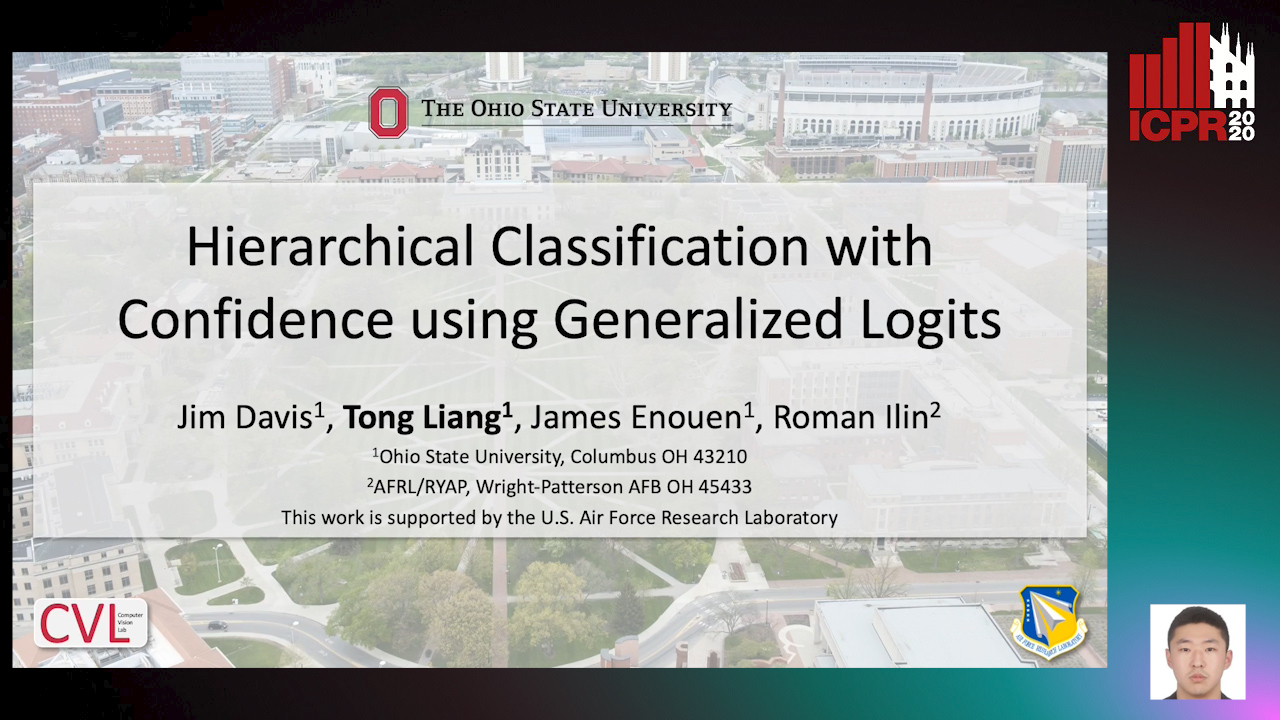
Auto-TLDR; Generalized Logits for Hierarchical Classification
Similar papers
Making Every Label Count: Handling Semantic Imprecision by Integrating Domain Knowledge
Clemens-Alexander Brust, Björn Barz, Joachim Denzler

Auto-TLDR; Class Hierarchies for Imprecise Label Learning and Annotation eXtrapolation
Abstract Slides Poster Similar
Verifying the Causes of Adversarial Examples
Honglin Li, Yifei Fan, Frieder Ganz, Tony Yezzi, Payam Barnaghi

Auto-TLDR; Exploring the Causes of Adversarial Examples in Neural Networks
Abstract Slides Poster Similar
Decision Snippet Features
Pascal Welke, Fouad Alkhoury, Christian Bauckhage, Stefan Wrobel

Auto-TLDR; Decision Snippet Features for Interpretability
Abstract Slides Poster Similar
On the Minimal Recognizable Image Patch
Mark Fonaryov, Michael Lindenbaum
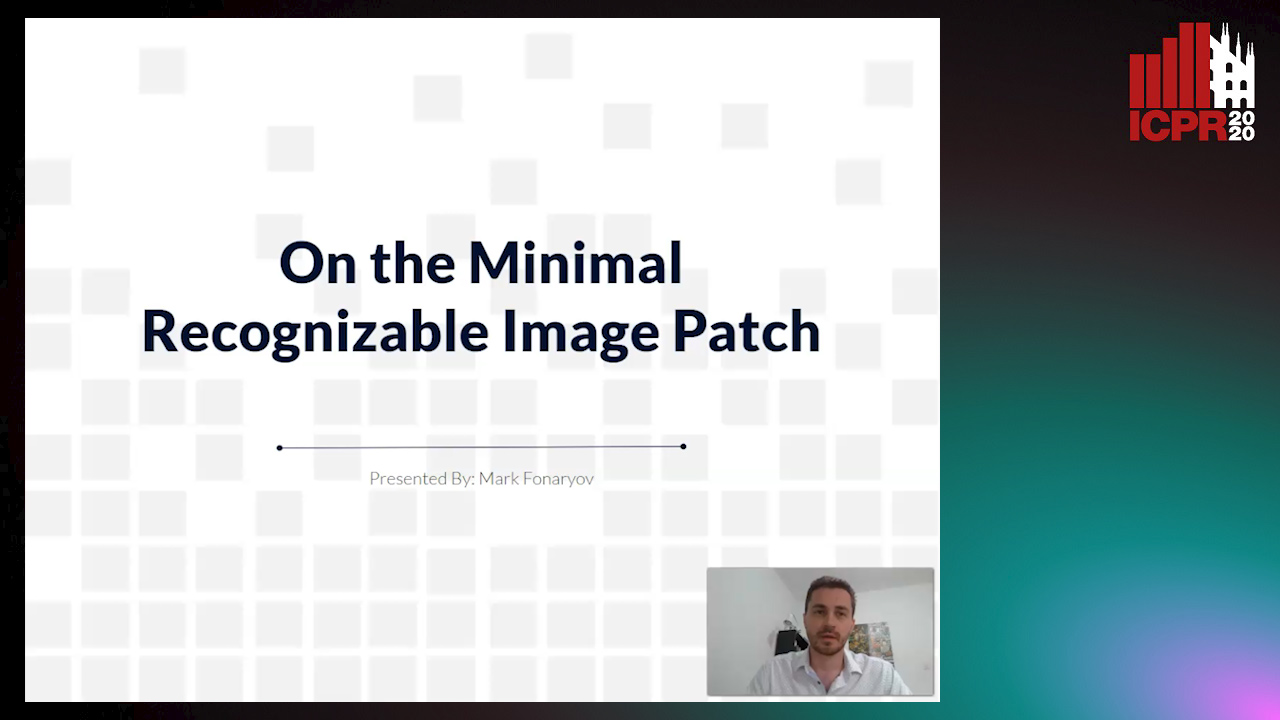
Auto-TLDR; MIRC: A Deep Neural Network for Minimal Recognition on Partially Occluded Images
Abstract Slides Poster Similar
Quasibinary Classifier for Images with Zero and Multiple Labels
Liao Shuai, Efstratios Gavves, Changyong Oh, Cees Snoek

Auto-TLDR; Quasibinary Classifiers for Zero-label and Multi-label Classification
Abstract Slides Poster Similar
Separation of Aleatoric and Epistemic Uncertainty in Deterministic Deep Neural Networks
Denis Huseljic, Bernhard Sick, Marek Herde, Daniel Kottke

Auto-TLDR; AE-DNN: Modeling Uncertainty in Deep Neural Networks
Abstract Slides Poster Similar
P-DIFF: Learning Classifier with Noisy Labels Based on Probability Difference Distributions
Wei Hu, Qihao Zhao, Yangyu Huang, Fan Zhang

Auto-TLDR; P-DIFF: A Simple and Effective Training Paradigm for Deep Neural Network Classifier with Noisy Labels
Abstract Slides Poster Similar
Learning Natural Thresholds for Image Ranking
Somayeh Keshavarz, Quang Nhat Tran, Richard Souvenir

Auto-TLDR; Image Representation Learning and Label Discretization for Natural Image Ranking
Abstract Slides Poster Similar
Probability Guided Maxout
Claudio Ferrari, Stefano Berretti, Alberto Del Bimbo

Auto-TLDR; Probability Guided Maxout for CNN Training
Abstract Slides Poster Similar
Iterative Label Improvement: Robust Training by Confidence Based Filtering and Dataset Partitioning
Christian Haase-Schütz, Rainer Stal, Heinz Hertlein, Bernhard Sick

Auto-TLDR; Meta Training and Labelling for Unlabelled Data
Abstract Slides Poster Similar
Creating Classifier Ensembles through Meta-Heuristic Algorithms for Aerial Scene Classification
Álvaro Roberto Ferreira Jr., Gustavo Gustavo Henrique De Rosa, Joao Paulo Papa, Gustavo Carneiro, Fabio Augusto Faria

Auto-TLDR; Univariate Marginal Distribution Algorithm for Aerial Scene Classification Using Meta-Heuristic Optimization
Abstract Slides Poster Similar
Knowledge Distillation with a Precise Teacher and Prediction with Abstention

Auto-TLDR; Knowledge Distillation using Deep gambler loss and selective classification framework
Abstract Slides Poster Similar
Exploiting Knowledge Embedded Soft Labels for Image Recognition
Lixian Yuan, Riquan Chen, Hefeng Wu, Tianshui Chen, Wentao Wang, Pei Chen

Auto-TLDR; A Soft Label Vector for Image Recognition
Abstract Slides Poster Similar
Overcoming Noisy and Irrelevant Data in Federated Learning
Tiffany Tuor, Shiqiang Wang, Bong Jun Ko, Changchang Liu, Kin K Leung
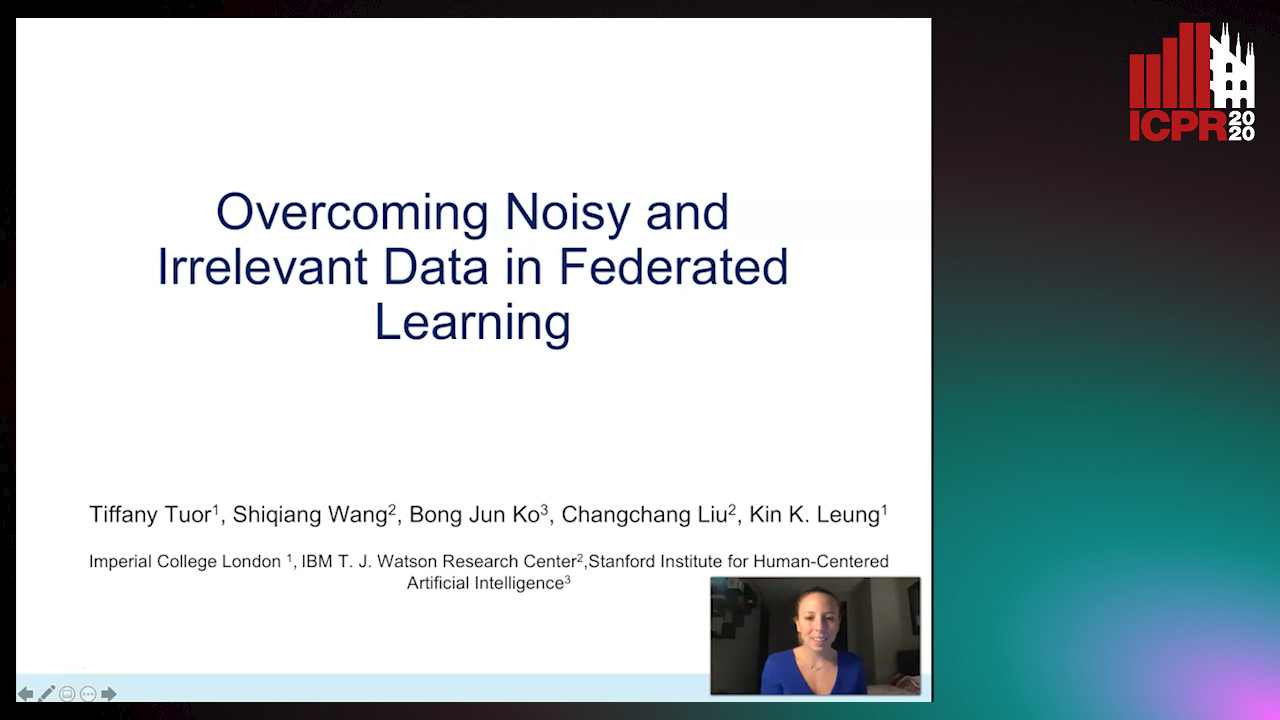
Auto-TLDR; Distributedly Selecting Relevant Data for Federated Learning
Abstract Slides Poster Similar
How to Define a Rejection Class Based on Model Learning?
Sarah Laroui, Xavier Descombes, Aurelia Vernay, Florent Villiers, Francois Villalba, Eric Debreuve

Auto-TLDR; An innovative learning strategy for supervised classification that is able, by design, to reject a sample as not belonging to any of the known classes
Abstract Slides Poster Similar
Towards Robust Learning with Different Label Noise Distributions
Diego Ortego, Eric Arazo, Paul Albert, Noel E O'Connor, Kevin Mcguinness

Auto-TLDR; Distribution Robust Pseudo-Labeling with Semi-supervised Learning
Neuron-Based Network Pruning Based on Majority Voting
Ali Alqahtani, Xianghua Xie, Ehab Essa, Mark W. Jones

Auto-TLDR; Large-Scale Neural Network Pruning using Majority Voting
Abstract Slides Poster Similar
Hierarchical Routing Mixture of Experts
Wenbo Zhao, Yang Gao, Shahan Ali Memon, Bhiksha Raj, Rita Singh

Auto-TLDR; A Binary Tree-structured Hierarchical Routing Mixture of Experts for Regression
Abstract Slides Poster Similar
On Learning Random Forests for Random Forest Clustering
Manuele Bicego, Francisco Escolano

Auto-TLDR; Learning Random Forests for Clustering
Abstract Slides Poster Similar
Confidence Calibration for Deep Renal Biopsy Immunofluorescence Image Classification
Federico Pollastri, Juan Maroñas, Federico Bolelli, Giulia Ligabue, Roberto Paredes, Riccardo Magistroni, Costantino Grana

Auto-TLDR; A Probabilistic Convolutional Neural Network for Immunofluorescence Classification in Renal Biopsy
Abstract Slides Poster Similar
Contextual Classification Using Self-Supervised Auxiliary Models for Deep Neural Networks
Sebastian Palacio, Philipp Engler, Jörn Hees, Andreas Dengel

Auto-TLDR; Self-Supervised Autogenous Learning for Deep Neural Networks
Abstract Slides Poster Similar
Learning Embeddings for Image Clustering: An Empirical Study of Triplet Loss Approaches
Kalun Ho, Janis Keuper, Franz-Josef Pfreundt, Margret Keuper

Auto-TLDR; Clustering Objectives for K-means and Correlation Clustering Using Triplet Loss
Abstract Slides Poster Similar
Conditional Multi-Task Learning for Plant Disease Identification
Sue Han Lee, Herve Goëau, Pierre Bonnet, Alexis Joly

Auto-TLDR; A conditional multi-task learning approach for plant disease identification
Abstract Slides Poster Similar
Learning to Sort Handwritten Text Lines in Reading Order through Estimated Binary Order Relations
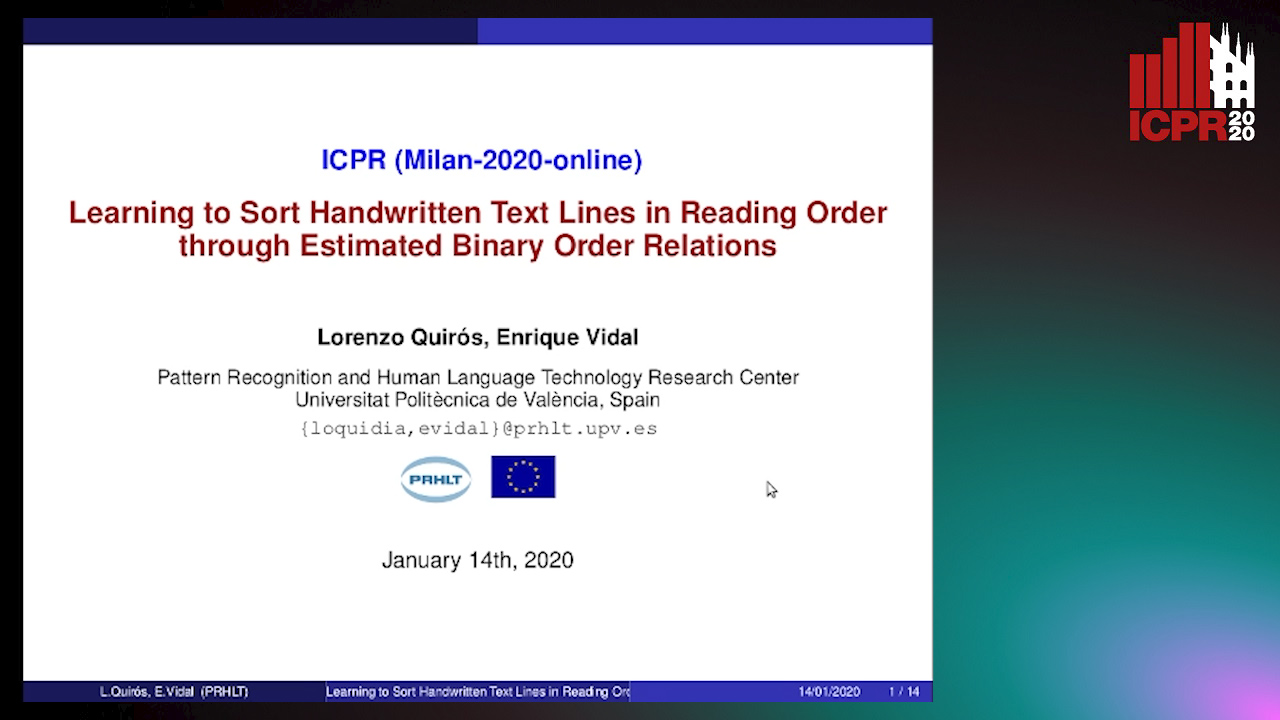
Auto-TLDR; Automatic Reading Order of Text Lines in Handwritten Text Documents
Bayesian Active Learning for Maximal Information Gain on Model Parameters
Kasra Arnavaz, Aasa Feragen, Oswin Krause, Marco Loog

Auto-TLDR; Bayesian assumptions for Bayesian classification
Abstract Slides Poster Similar
Weakly Supervised Learning through Rank-Based Contextual Measures
João Gabriel Camacho Presotto, Lucas Pascotti Valem, Nikolas Gomes De Sá, Daniel Carlos Guimaraes Pedronette, Joao Paulo Papa

Auto-TLDR; Exploiting Unlabeled Data for Weakly Supervised Classification of Multimedia Data
Abstract Slides Poster Similar
On-Manifold Adversarial Data Augmentation Improves Uncertainty Calibration
Kanil Patel, William Beluch, Dan Zhang, Michael Pfeiffer, Bin Yang

Auto-TLDR; On-Manifold Adversarial Data Augmentation for Uncertainty Estimation
Rethinking Experience Replay: A Bag of Tricks for Continual Learning
Pietro Buzzega, Matteo Boschini, Angelo Porrello, Simone Calderara

Auto-TLDR; Experience Replay for Continual Learning: A Practical Approach
Abstract Slides Poster Similar
Uncertainty-Sensitive Activity Recognition: A Reliability Benchmark and the CARING Models
Alina Roitberg, Monica Haurilet, Manuel Martinez, Rainer Stiefelhagen

Auto-TLDR; CARING: Calibrated Action Recognition with Input Guidance
A Detection-Based Approach to Multiview Action Classification in Infants
Carolina Pacheco, Effrosyni Mavroudi, Elena Kokkoni, Herbert Tanner, Rene Vidal

Auto-TLDR; Multiview Action Classification for Infants in a Pediatric Rehabilitation Environment
Stage-Wise Neural Architecture Search
Artur Jordão, Fernando Akio Yamada, Maiko Lie, William Schwartz
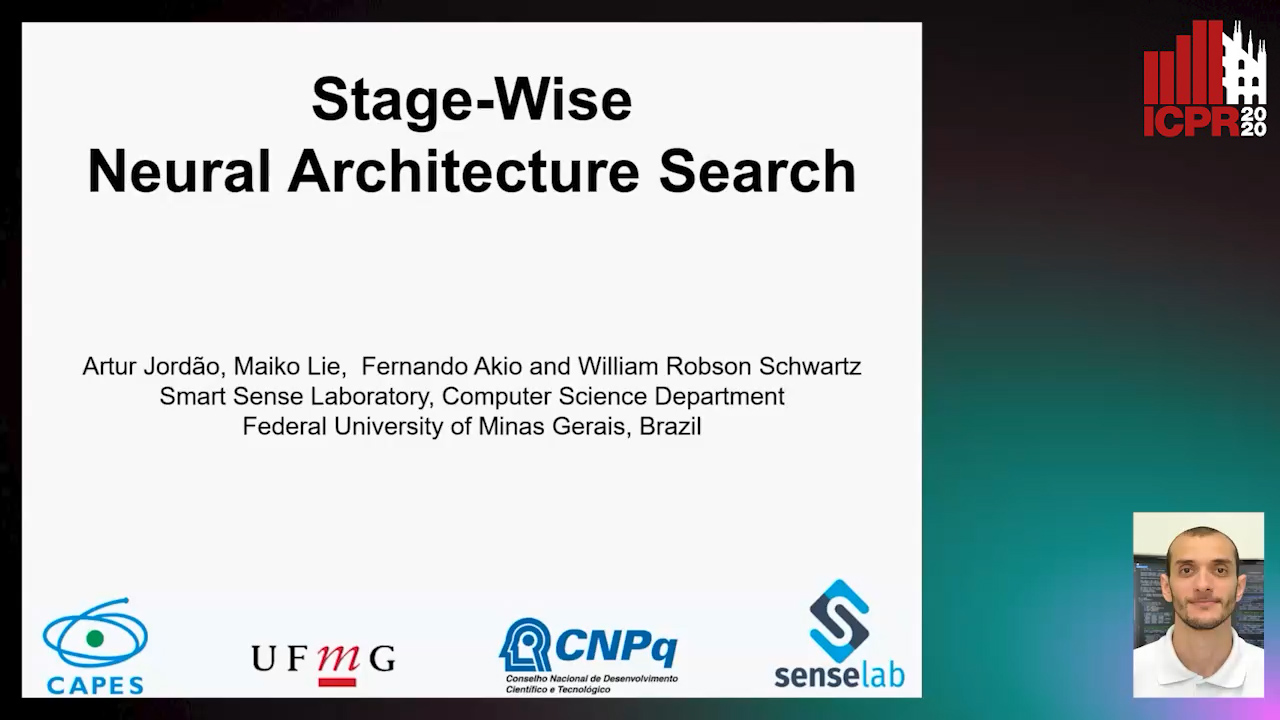
Auto-TLDR; Efficient Neural Architecture Search for Deep Convolutional Networks
Abstract Slides Poster Similar
Improving reliability of attention branch network by introducing uncertainty
Takuya Tsukahara, Tsubasa Hirakawa, Takayoshi Yamashita, Hironobu Fujiyoshi
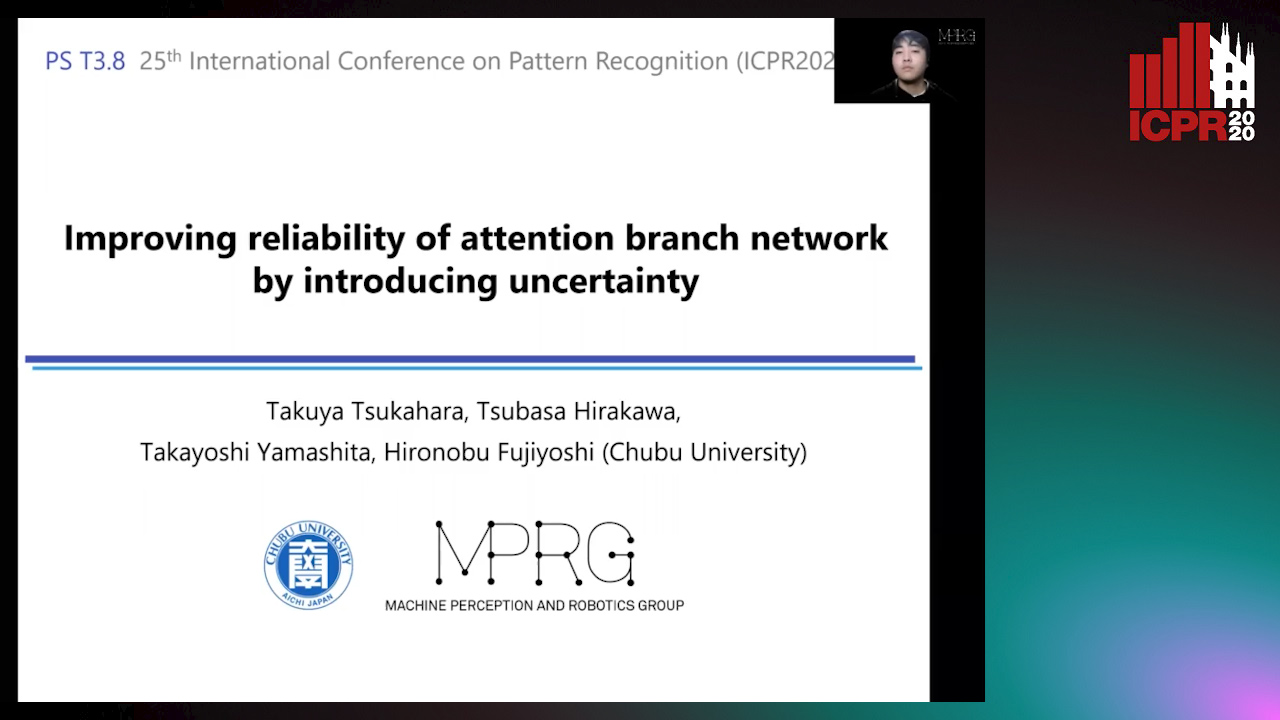
Auto-TLDR; Bayesian Attention Branch Network for Convolutional Neural Networks
Abstract Slides Poster Similar
On Resource-Efficient Bayesian Network Classifiers and Deep Neural Networks
Wolfgang Roth, Günther Schindler, Holger Fröning, Franz Pernkopf

Auto-TLDR; Quantization-Aware Bayesian Network Classifiers for Small-Scale Scenarios
Abstract Slides Poster Similar
Towards Tackling Multi-Label Imbalances in Remote Sensing Imagery
Dominik Koßmann, Thorsten Wilhelm, Gernot Fink

Auto-TLDR; Class imbalance in land cover datasets using attribute encoding schemes
Abstract Slides Poster Similar
Can Data Placement Be Effective for Neural Networks Classification Tasks? Introducing the Orthogonal Loss
Brais Cancela, Veronica Bolon-Canedo, Amparo Alonso-Betanzos

Auto-TLDR; Spatial Placement for Neural Network Training Loss Functions
Abstract Slides Poster Similar
A Fine-Grained Dataset and Its Efficient Semantic Segmentation for Unstructured Driving Scenarios
Kai Andreas Metzger, Peter Mortimer, Hans J "Joe" Wuensche

Auto-TLDR; TAS500: A Semantic Segmentation Dataset for Autonomous Driving in Unstructured Environments
Abstract Slides Poster Similar
A Novel Random Forest Dissimilarity Measure for Multi-View Learning
Hongliu Cao, Simon Bernard, Robert Sabourin, Laurent Heutte

Auto-TLDR; Multi-view Learning with Random Forest Relation Measure and Instance Hardness
Abstract Slides Poster Similar
A Heuristic-Based Decision Tree for Connected Components Labeling of 3D Volumes
Maximilian Söchting, Stefano Allegretti, Federico Bolelli, Costantino Grana

Auto-TLDR; Entropy Partitioning Decision Tree for Connected Components Labeling
Abstract Slides Poster Similar
Accuracy-Perturbation Curves for Evaluation of Adversarial Attack and Defence Methods
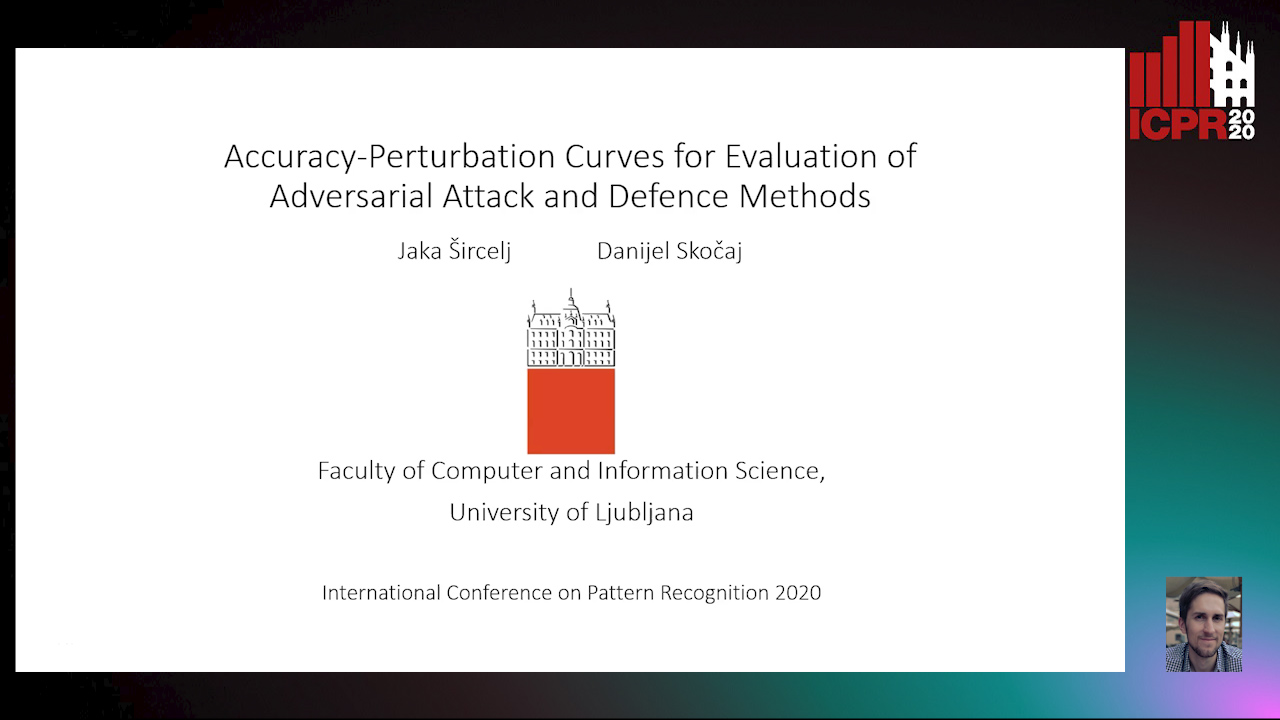
Auto-TLDR; Accuracy-perturbation Curve for Robustness Evaluation of Adversarial Examples
Abstract Slides Poster Similar
Dynamic Multi-Path Neural Network
Yingcheng Su, Yichao Wu, Ken Chen, Ding Liang, Xiaolin Hu

Auto-TLDR; Dynamic Multi-path Neural Network
On the Information of Feature Maps and Pruning of Deep Neural Networks
Mohammadreza Soltani, Suya Wu, Jie Ding, Robert Ravier, Vahid Tarokh

Auto-TLDR; Compressing Deep Neural Models Using Mutual Information
Abstract Slides Poster Similar
TreeRNN: Topology-Preserving Deep Graph Embedding and Learning
Yecheng Lyu, Ming Li, Xinming Huang, Ulkuhan Guler, Patrick Schaumont, Ziming Zhang

Auto-TLDR; TreeRNN: Recurrent Neural Network for General Graph Classification
Abstract Slides Poster Similar
E-DNAS: Differentiable Neural Architecture Search for Embedded Systems
Javier García López, Antonio Agudo, Francesc Moreno-Noguer

Auto-TLDR; E-DNAS: Differentiable Architecture Search for Light-Weight Networks for Image Classification
Abstract Slides Poster Similar
Estimation of Abundance and Distribution of SaltMarsh Plants from Images Using Deep Learning
Jayant Parashar, Suchendra Bhandarkar, Jacob Simon, Brian Hopkinson, Steven Pennings
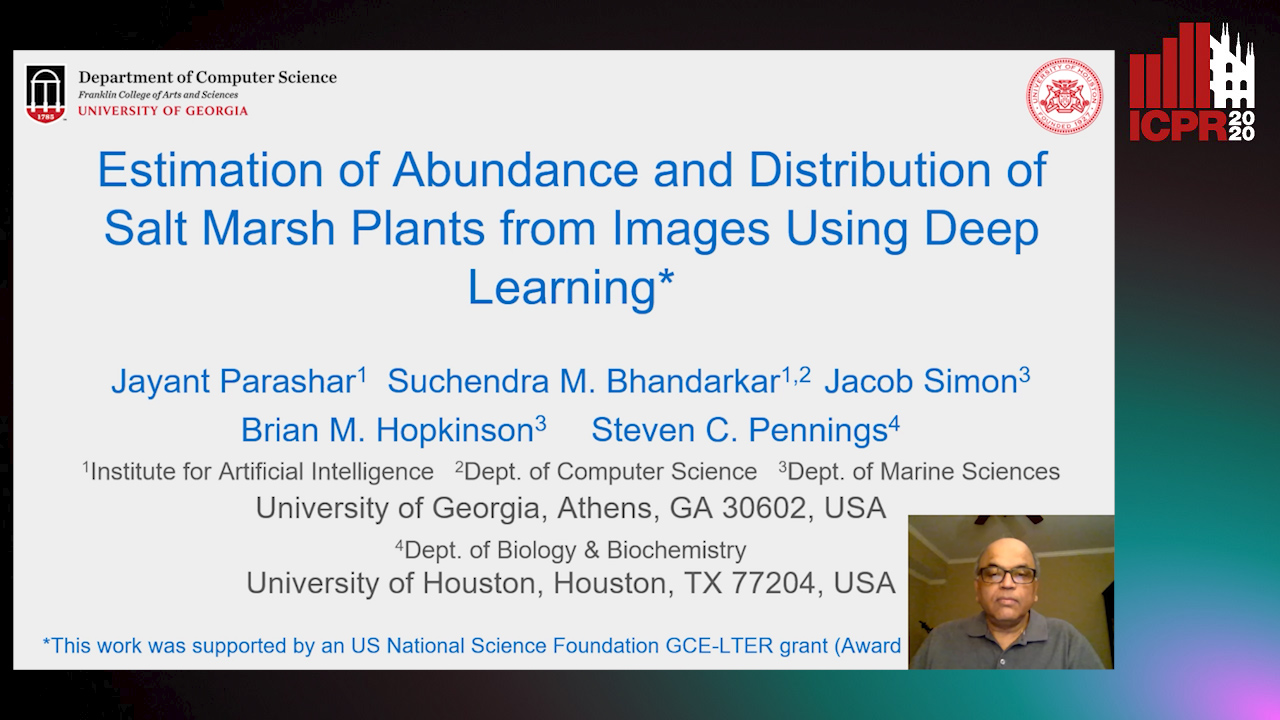
Auto-TLDR; CNN-based approaches to automated plant identification and localization in salt marsh images
The eXPose Approach to Crosslier Detection
Antonio Barata, Frank Takes, Hendrik Van Den Herik, Cor Veenman

Auto-TLDR; EXPose: Crosslier Detection Based on Supervised Category Modeling
Abstract Slides Poster Similar
A Joint Representation Learning and Feature Modeling Approach for One-Class Recognition
Pramuditha Perera, Vishal Patel

Auto-TLDR; Combining Generative Features and One-Class Classification for Effective One-class Recognition
Abstract Slides Poster Similar
Augmented Bi-Path Network for Few-Shot Learning
Baoming Yan, Chen Zhou, Bo Zhao, Kan Guo, Yang Jiang, Xiaobo Li, Zhang Ming, Yizhou Wang

Auto-TLDR; Augmented Bi-path Network for Few-shot Learning
Abstract Slides Poster Similar
Generalization Comparison of Deep Neural Networks Via Output Sensitivity
Mahsa Forouzesh, Farnood Salehi, Patrick Thiran

Auto-TLDR; Generalization of Deep Neural Networks using Sensitivity